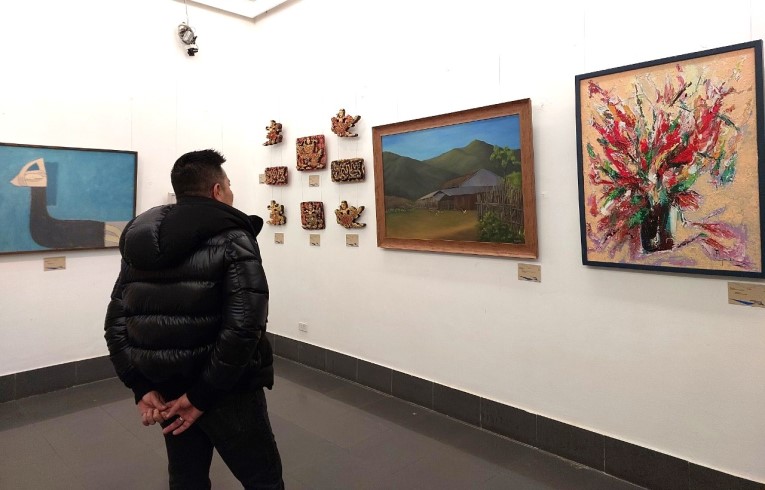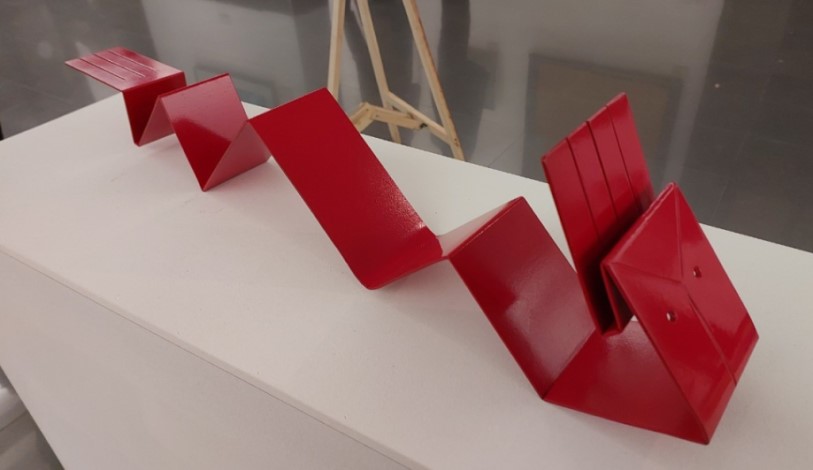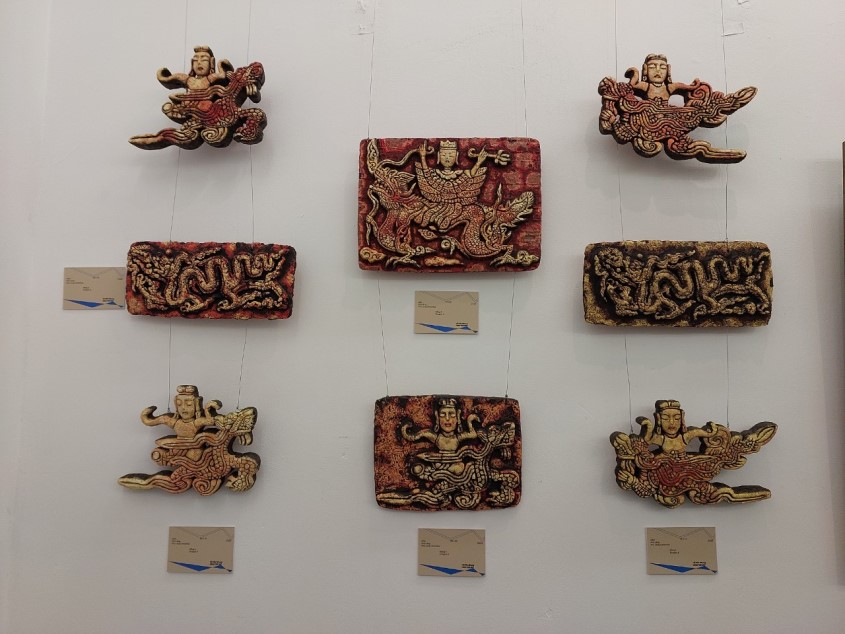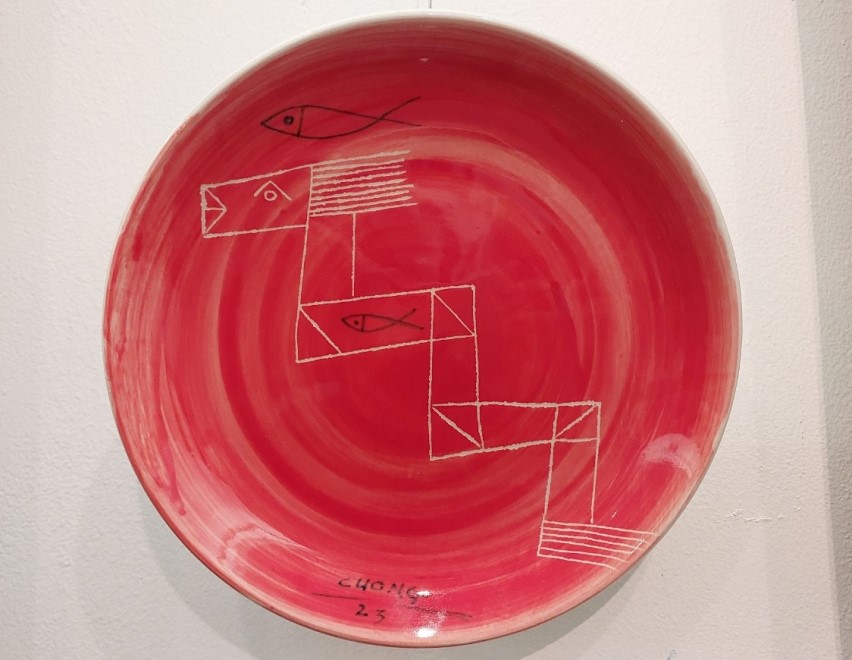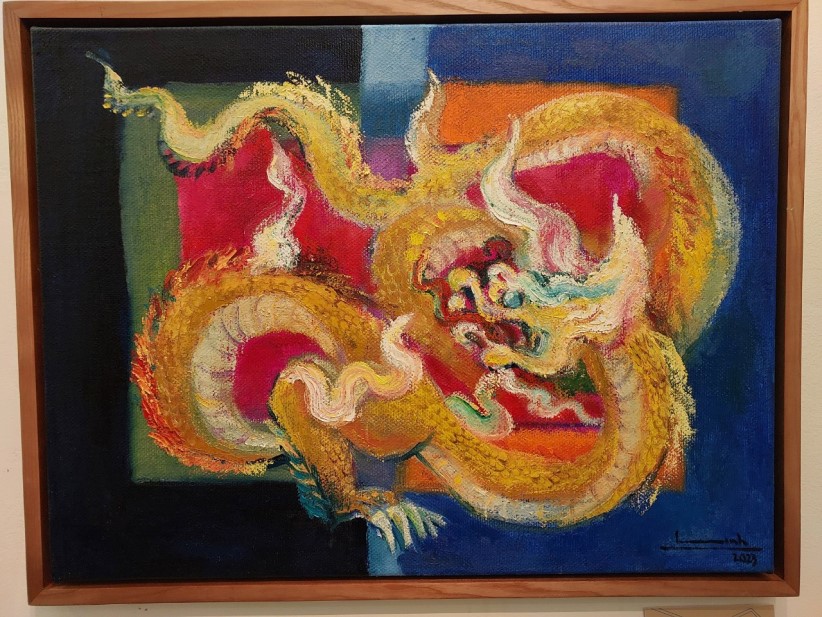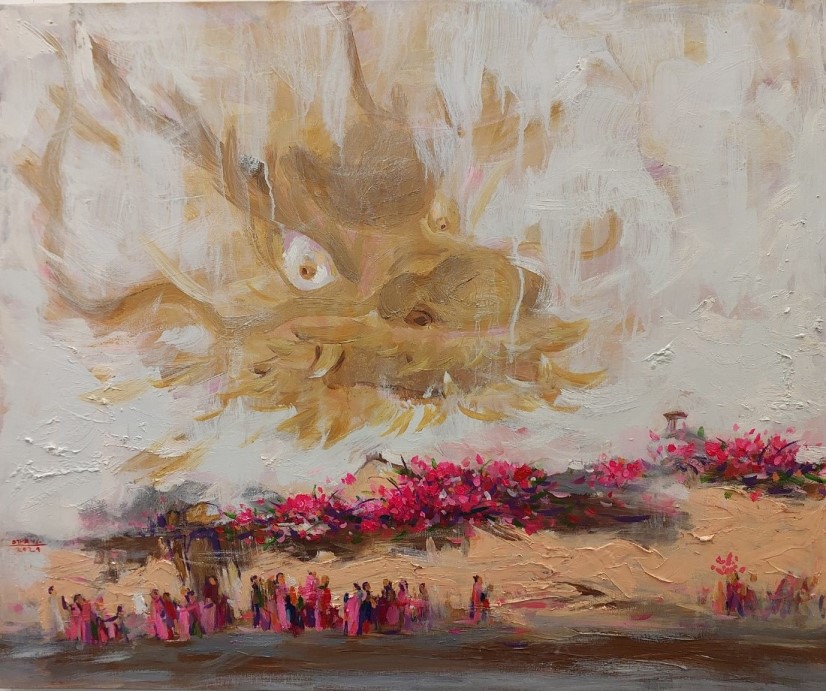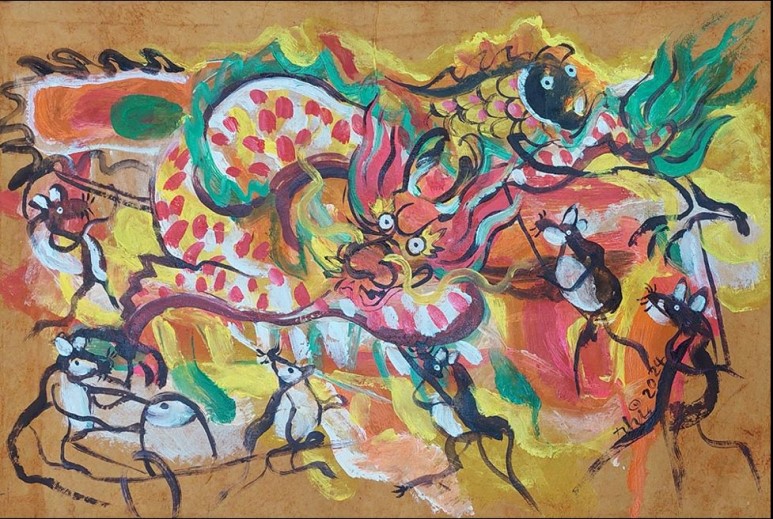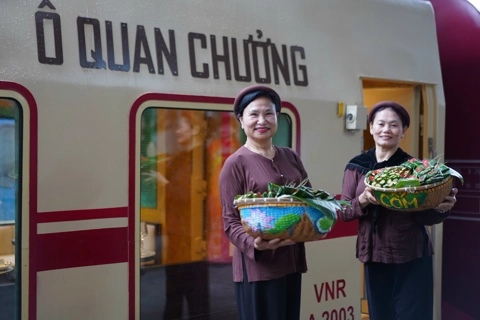Vietnamese artists display dragon-inspired artworks
The dragon-inspired artworks are created using various materials, mainly traditional ones.
To welcome the Lunar New Year of the Dragon, the artist group G39 opened the Dragon Exhibition at the Vietnam Museum of Fine Arts in Hanoi on January 24.
The exhibition features more than 90 artworks by 20 artists, including paintings and statues, created using many materials such as oil paint, gouache, lacquer, do (poonah) paper, acrylic, Huong Canh ceramics, Phu Lang ceramics, and others.
| The exhibition features 90 works by 20 artists. Photo: Ngo Minh/The Hanoi Times |
On display are Hidden Dragon by artist Nguyen Hong Quang, Playing with Dragons by artist Nguyen Quoc Thang, Giap Thin by artist Hoang Phuong Lien, Tet Flowers by artist Binh Nhi, Fairy Dragon by artist Vu Huu Nhung, Old Tet by artist Nguyen Hong Phuong, Waiting for Spring by Tao Linh, Zen Dragon by Vuong Linh, Dragon Procession by Le Thiet Cuong and Spring Dragon by Le Thu Huong.
In addition to dragon-inspired works, the exhibition also presents many works of art with the theme of love for nature and people such as Morning Sun by artist Viet Anh, Listen to the Colors by artist Bui Thanh Thuy, Dance by artist Phuong Binh, Northwest by artist Nguyen Thanh Quang, and Eastern Girl by artist Nguyen Minh.
According to the curator, artist Le Thiet Cuong, representative of the G39 group, since ancient times, the dragon has carried two symbols at the same time, namely a symbol of kingship in feudal times and a religious symbol, because the dragon is one of the quartets of sacred animals: dragon, kylin, turtle, and phoenix.
Of the 12 zodiac animals in the Asian tradition, the dragon is the only one that doesn't exist in life. However, it is one of the most common motifs in the history of Vietnamese art from the 10th century to the end of the 19th century.
Over the past 1,000 years, through various periods, the image of the dragon has undergone many changes, including shape, composition, and material.
There are five common motifs of dragons in the history of Vietnam: Ly Dynasty's (1009-1225) dragon: Smooth, delicate with soft curves. Tran Dynasty's (1226 - 1400) dragon looks similar to Ly's on the surface, but its spirit is different, more robust and strong, while Early Le Dynasty's (980-1009) dragon focuses on details and specificity, with less decoration.
"The depiction of dragons has evolved through different periods, from intricately carved reliefs to cast, forged, embossed, and mainly in the form of bas-reliefs. Dragons have appeared in various materials, including stone, terracotta, wood, ceramics, bronze, and lacquer. They have been depicted in various compositions, such as rectangular, circular, leaf-shaped, and crescent-shaped," said Cuong.
By revisiting the dragon in ancient art, today's artists can continue to create and move with the dragon from tradition to modernity, Cuong said.
The exhibition runs until January 30 at the Vietnam Museum of Fine Arts, 66 Nguyen Thai Hoc Street, Hanoi.
Some artworks at the exhibition:
| Dragon by Le Thiet Cuong. Photo: Ngo Minh/The Hanoi Times |
| A collection of ceramic art by Vu Huu Nhung. Photo: Ngo Minh/The Hanoi Times |
| Le Thiet Cuong's Carp Turns into Dragon work. Photo: Ngo Minh/The Hanoi Times |
| Sacred Dragon by Vuong Linh. Photo: Ngo Minh/The Hanoi Times |
| Descendants of Dragons and Fairies by Nguyen Quoc Thang. |
| Dragon Dance by Binh Nhi. |

